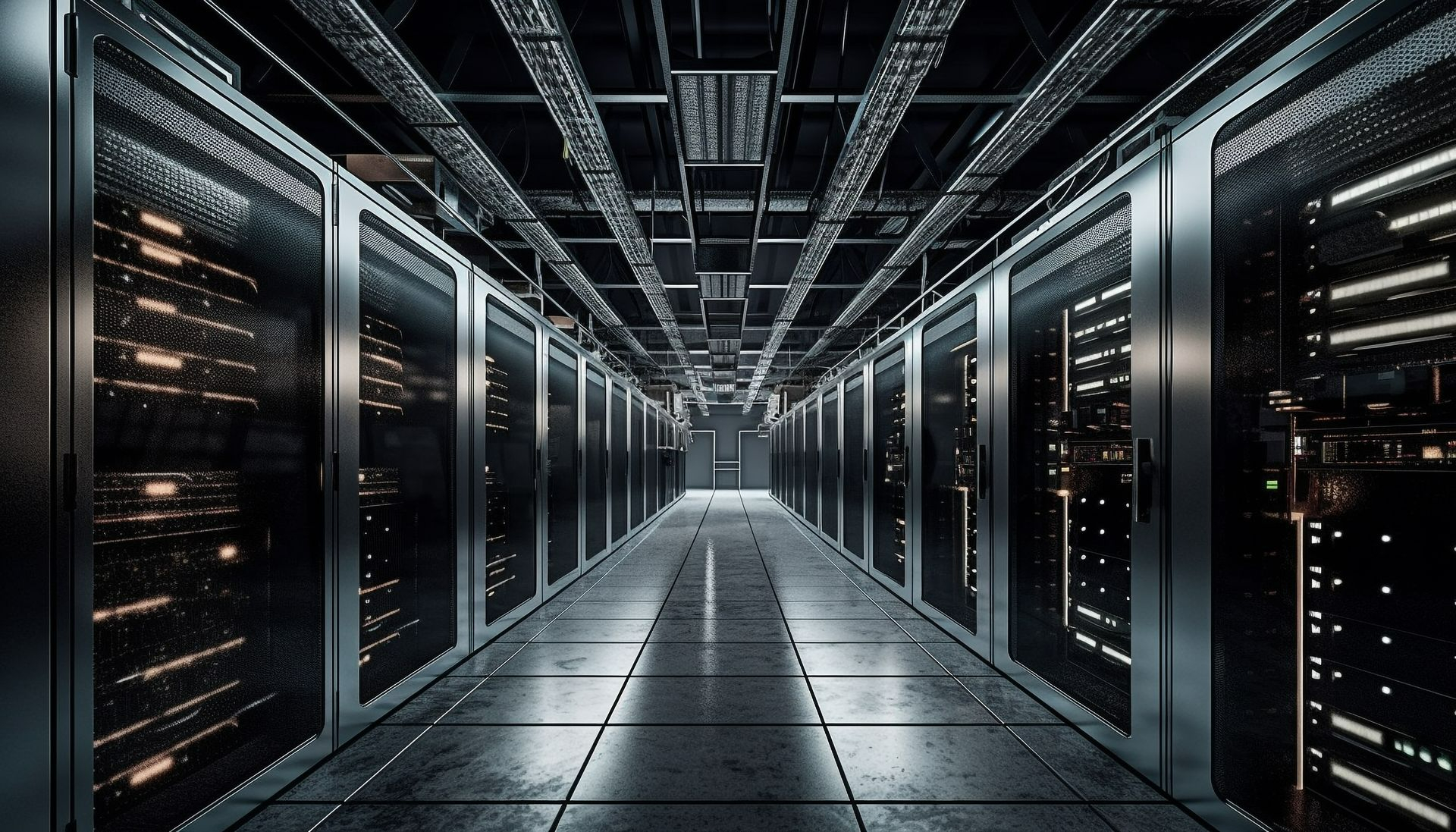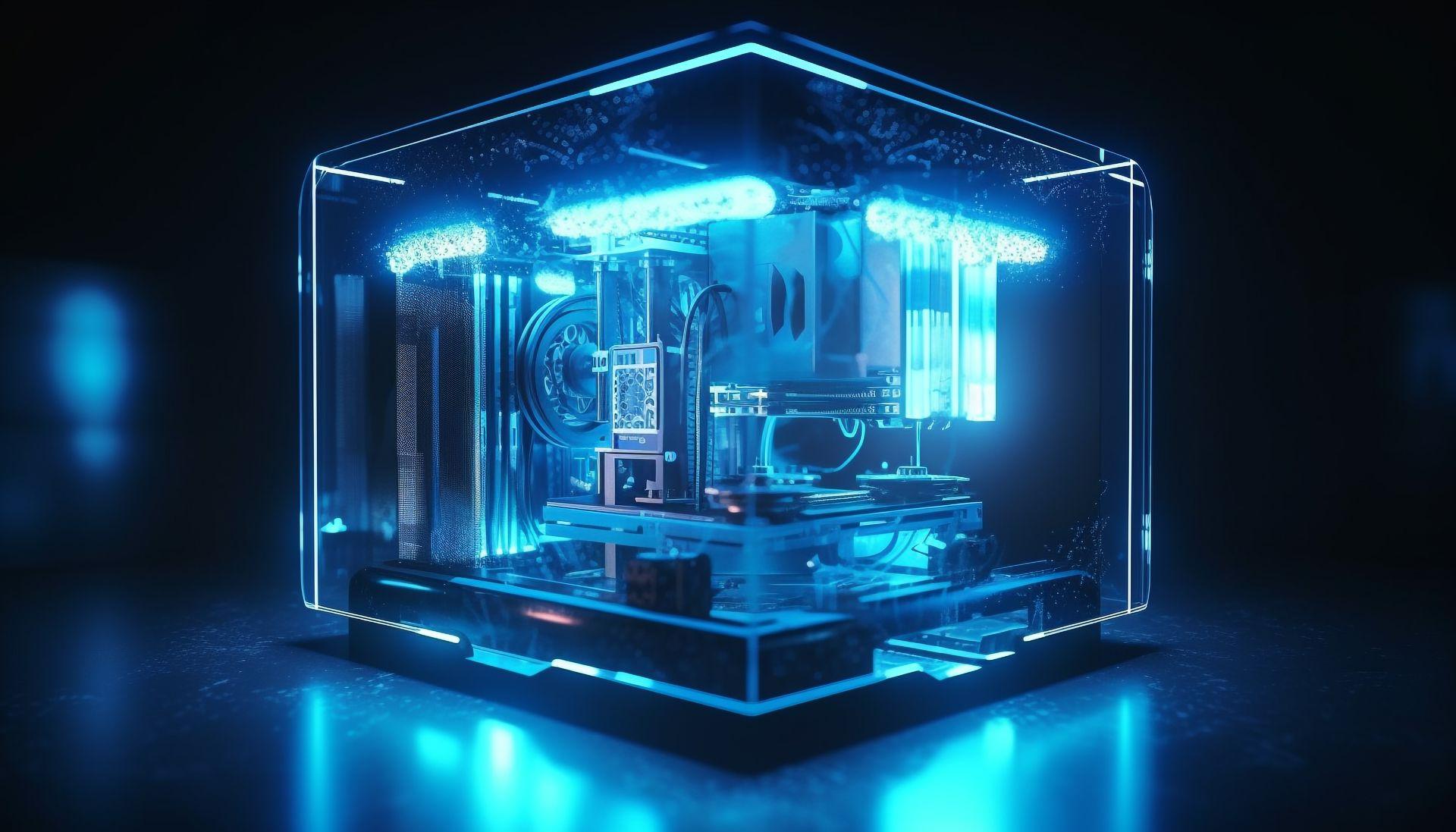
Data Center Solutions
solutions are the products and services that help you create and maintain a data center, which is a physical or virtual facility that houses the IT infrastructure for your applications and data. Data center solutions can include:
- IT equipment, such as servers, routers, storage systems, and firewalls, that provide the computing, networking, and security capabilities for your data center.
- Supporting infrastructure, such as cooling systems, batteries, generators, and cabling, that ensure the availability, reliability, and efficiency of your data center.
- Software and services, such as virtualization, automation, orchestration, monitoring, and management, that optimize the performance, scalability, and agility of your data center.

Network Monitoring System
A network monitoring system is a system that constantly monitors a computer network for slow or failing components and that notifies the network administrator in case of outages or other trouble A network monitoring system can help you:
- Gain clear visibility into the network and its devices, such as servers, routers, switches, firewalls, and more.
- Optimize the performance, availability, reliability, and efficiency of your network and its applications.
- Detect and resolve issues quickly before they affect your business operations or customer satisfaction.
- Reduce costs and save time by automating network management tasks and reducing manual work.
- Enhance security and compliance by identifying and mitigating potential threats and vulnerabilities.

IP Telephony System
An IP telephony system is a system that uses the Internet Protocol (IP) to transmit voice calls over a network, such as the Internet or a local area network (LAN). An IP telephony system can offer many benefits, such as:
- Lower costs: An IP telephony system can reduce the expenses of phone bills, equipment, and maintenance by using a single network for voice and data communication. An IP telephony system can also leverage the existing infrastructure and hardware of a network, such as computers, routers, and switches, without requiring additional or proprietary devices.
- Higher quality: An IP telephony system can provide better sound quality and reliability than traditional phone systems by using advanced codecs and protocols that optimize the voice transmission. An IP telephony system can also support features such as echo cancellation, noise reduction, and automatic gain control that enhance the voice clarity.
- Greater scalability: An IP telephony system can easily accommodate the growth and changes of a business by allowing for the addition or removal of users and devices without affecting the network performance or requiring major upgrades. An IP telephony system can also support multiple locations and remote workers by connecting them through the Internet

Network Access Control
Network access control (NAC) is a security solution that enforces policy on devices that access networks to increase network visibility and reduce risk. NAC ensures that only users who are authenticated and devices that are authorized and compliant with security policies can enter the network. NAC can also detect and respond to any abnormal or malicious network activity by isolating or blocking the affected devices. NAC can help you:
- Control who and what can access your network, including employees, guests, contractors, partners, and IoT devices.
- Manage the access levels and permissions for different types of users and devices based on their roles, locations, and security postures.
- Protect your network from cyberattacks by preventing unauthorized or compromised devices from spreading malware or stealing data.
- Automate network management tasks such as device discovery, profiling, authentication, authorization, compliance checking, and incident response.
- Monitor and audit network activity and generate reports and insights for security and compliance purposes.

Uninterruptible Power Supply UPS
An uninterruptible power supply (UPS) is a device that provides backup power to a load when the main power source fails or becomes unstable. A UPS can protect your devices from power outages, surges, sags, noise, and other power problems that can damage your equipment or cause data loss. A UPS can also give you enough time to safely shut down your devices or switch to an alternative power source.
There are different types of UPS devices that vary in their design, capacity, and features. Some of the common types are:
- Standby UPS: This type of UPS is the simplest and cheapest. It monitors the main power source and switches to battery power when it detects a problem. It provides basic protection from power outages and surges, but not from other power quality issues. A standby UPS is suitable for home or small office use.
- Line-interactive UPS: This type of UPS is more advanced than a standby UPS. It uses an automatic voltage regulator (AVR) to adjust the output voltage when the main power source fluctuates. It provides better protection from power outages, surges, sags, and noise. A line-interactive UPS is suitable for home or small business use.

Access Door Solution
An access door solution is a way of providing secure and convenient access to a building, room, or equipment. An access door solution can consist of various components, such as:
- A door: This is the physical barrier that separates the inside from the outside. A door can be made of different materials, such as wood, metal, glass, or composite. A door can also have different features, such as fire resistance, sound insulation, or bullet and blast protection.
- A lock: This is the mechanism that controls the opening and closing of the door. A lock can be operated by different means, such as a key, a card, a code, a fingerprint, or a face recognition 1.
- A reader: This is the device that reads the credential that is used to unlock the door. A reader can be integrated with the lock or installed separately on the wall or the door frame. A reader can use different technologies, such as magnetic stripe, proximity, smart card, or biometric .
- A controller: This is the device that communicates with the reader and the lock and verifies the credential. A controller can be standalone or networked with other controllers and a central server. A controller can also store and manage the access rights and schedules for different users and doors .